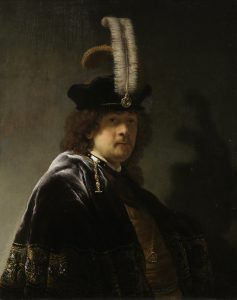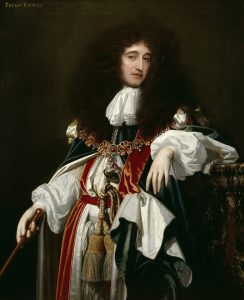The National Trust’s landmark exhibition Prized Possessions has just returned from The Mauritshuis museum in the Hague to Petworth House in Sussex.
The Mauritshuis houses the Royal Cabinet of Paintings which includes many of the finest Dutch Golden Age paintings including Johannes Vermeer’s Girl with a Pearl Earring. Nevertheless long queues formed to see Prized Possessions which speaks of the importance of the works on show in this exhibition.
Prized Possessions builds on the tradition established at Petworth House by house and collections manager Andrew Loukes of re-examining the collections and art of the National Trust. In the 17th and 18th centuries Dutch art informed English taste. It is wonderful to see these works displayed in the context of, arguably, England’s finest country house. Petworth has a fine collection of Dutch masters.
The exhibition reflects the diversity of subjects and styles in Dutch Golden Age art with wonderful religious scenes, landscapes still lifes and portraits. Prized Possessions has been curated by David Taylor and Rupert Goulding. The paintings on show are amongst the most celebrated and prized in the National Trust’s collections. The visitor to Petworth will uniquely also be able to see a selection of Dutch masters generously loaned by Lord Egremont from his private collection.

As you enter the exhibition gallery you are met by Rembrandt van Rijn’s remarkable ‘Self-Portrait, wearing a Feathered Bonnet.’ There is such life to the portrait. It displays the psychological insight and unsurpassed technique which underpins Rembrandt’s reputation as an artist. Here we see Rembrandt’s confidence at the height of his wealth and fame.
The portrait is typical of the popular tronie genre where the sitter is depicted in costume playing some sort of role. Rembrandt’s costume with its velvet bonnet decorated with ostrich feathers, the gorget armour and aristocratic hair lends the painting a timeless quality. His pose and the dramatic use of light seems to unite sitter and viewer.
The portrait is signed and dated 1635, the year that the artist and his wife Saskia moved to the fashionable Nieuwe Doelenstraat in Amsterdam.
Until recently the portrait was attributed to one of Rembrandt’s pupils, Govaert Flinck. However, recent scientific and historical research has established the painting as one of a large group of some forty autograph self-portraits by Rembrandt.

The portrait of Prince Rupert of the Rhine (1619-1682) by Simon Pietersz Verelst is of contrasting style. The painting forms part of Petworth’s permanent collection and depicts Prince Rupert in middle age after the restoration of his cousin Charles II. He wears the robes of the Order of the Garter. Verelst employs light and colour beautifully to emphasise the opulence and power expressed in his attire.
The exhibition is a cabinet of exquisite paintings and the context of Petworth House and its exhibition rooms allows us to re-examine these prized possessions and their influence on English Country House taste with fresh eyes.
I am delighted that Toovey’s are once again supporting Petworth House’s exhibition program.
Prized Possessions is a jewel like exhibition and a must see. The show is sure to be a sell out so book early. For more information on the exhibition, to book tickets and for opening times visit www.nationaltrust.org.uk/petworth.
By Rupert Toovey, a senior director of Toovey’s, the leading fine art auction house in West Sussex, based on the A24 at Washington. Originally published in the West Sussex Gazette.